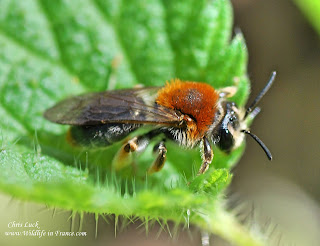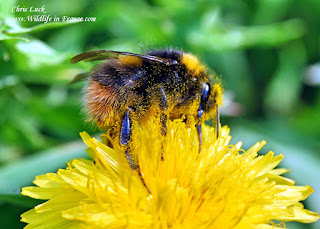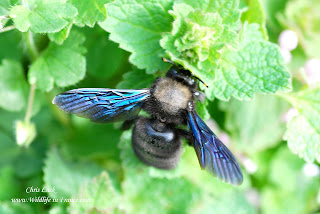Honeybee swarms that issue from colonies that live in hollow trees, cavities in stone walls, roof spaces and such like are always of interest to me as they have invariably developed the ability to survive without all the treatments and manipulations that beekeepers generally use and to my mind these are the survivor bees we need for the future.
This little piece is about one such swarm…….
To my surprise I was called to a bee swarm on the 18th August this year which is extremely late in the season but these things do happen and after asking the caller a few questions to verify it really was a swarm of bees I prepared a ruchette, (which is a small hive or nuc box in English), popped it in the car and set off.
Sure enough, when I arrived there was the small swarm clustered close to the ground attached to an Oleander shrub about 20 metres from the persons’ house where it had come from. Remarkably the roof of the house has three separate bee colonies in it, one on each eave and one in the ridge and they have apparently been there for several years which goes some way to disproving the widely held view that left to themselves honey bees won’t nest close together – these are no more than 6 or 7 metres apart in total.
Click photos to enlarge
A small swarm at that time of year will almost certainly be a swarm that the colony has produced in addition to its main or prime swarm that will have been larger and earlier in the year. The conventional wisdom is that secondary swarms or after-swarms are issued in the first week or so following the prime swarm and contain a virgin Queen and although normally the first virgin Queen to hatch will kill the others in their cells before they hatch this isn’t always the case and exceptionally over a period of some weeks there could possibly be a 3rd, 4th or even 5th swarm all lead by a Virgin Queen if the issuing colony is severely restricted for space or genetically inclined to swarm which can apparently be the case. There are other reasons put forward for after-swarms but that isn’t really important here as this particular very small swarm had a mated Queen and didn’t issue until the 18th August, (April – June being the normal time period for swarming here).
Housing the swarm in the Ruchette was easy with a little persuasion following which I took them back to my place.
Next there is the tricky matter of giving them a fighting chance of becoming a viable colony at this late stage of the year, something they would be unlikely to have without help. When a swarm moves into its new home it has nothing, no comb, no stores and no brood. This is a period when the bees must work hard and fast in constructing comb, fetch both nectar and pollen to enable the raising of new bees. Even if conditions are good it will be nearly 4 weeks before there will be any new bees during which time the size of the colony will be diminishing as bees die. In this case that would take us to the middle of September when the season is more or less finished apart from Ivy, a few garden flowers and perhaps some flowering cover crops / green manures, phacelia, mustard, fodder radish being the most widely grown, certainly not enough for so few bees to provide themselves with winter stores.
With this in mind the following morning I immediately put a top feeder on with syrup and continued keeping it topped up every day until the beginning of October when I started giving them slightly diluted honey using a simple modification to the inner cap of the feeder by drilling some holes in it to make the honey available to the bees.
All this feeding has given the bees the ability to increase their colony size and bring the ruchette up to winter weight with stores of honey before the end of October. All I can do now hope that they will get through the winter, especially as they are from an unmanaged colony which as I mentioned at the outset tend to have good survival traits.
Fingers crossed, Chris










































